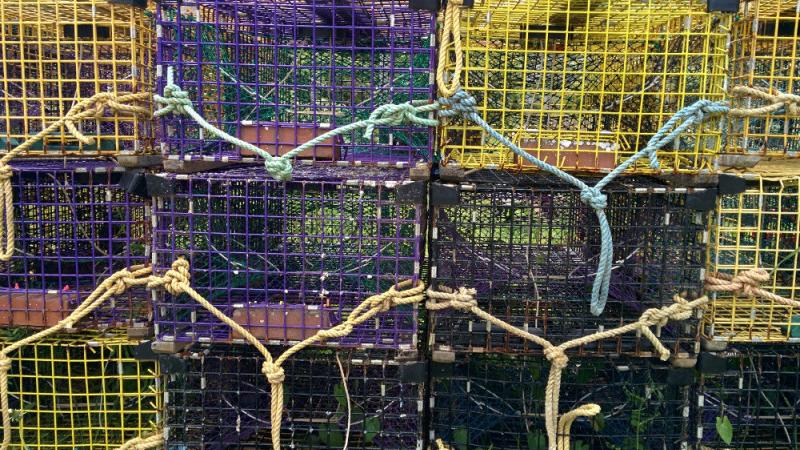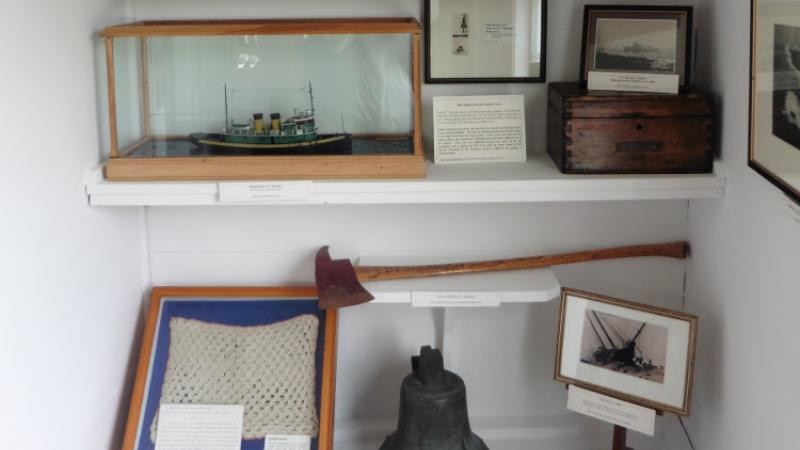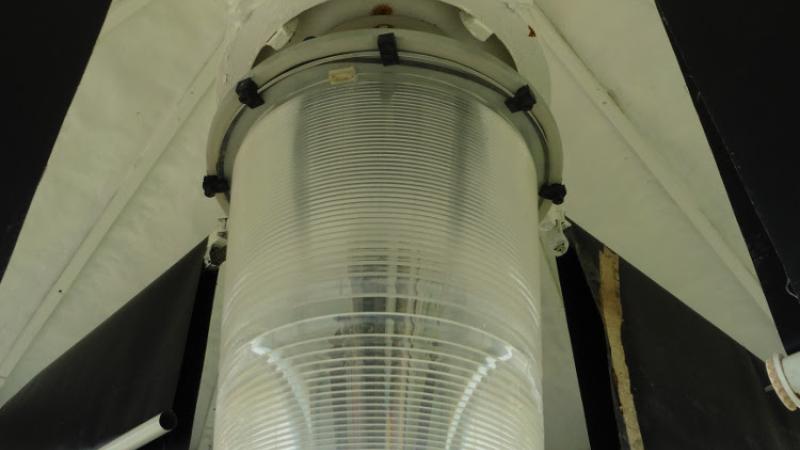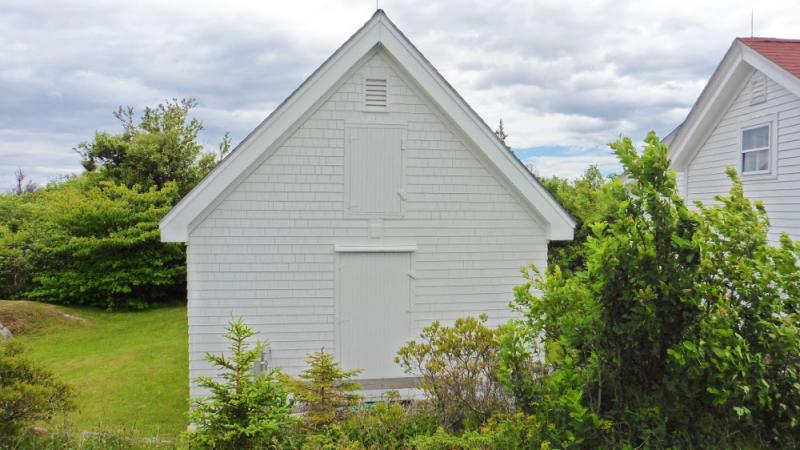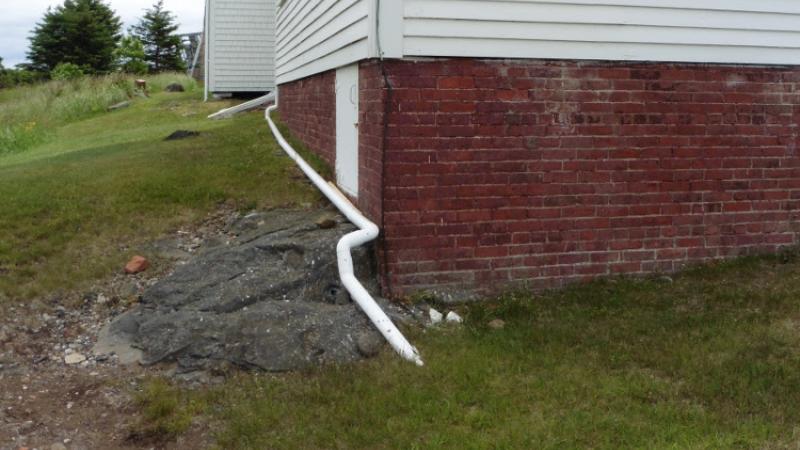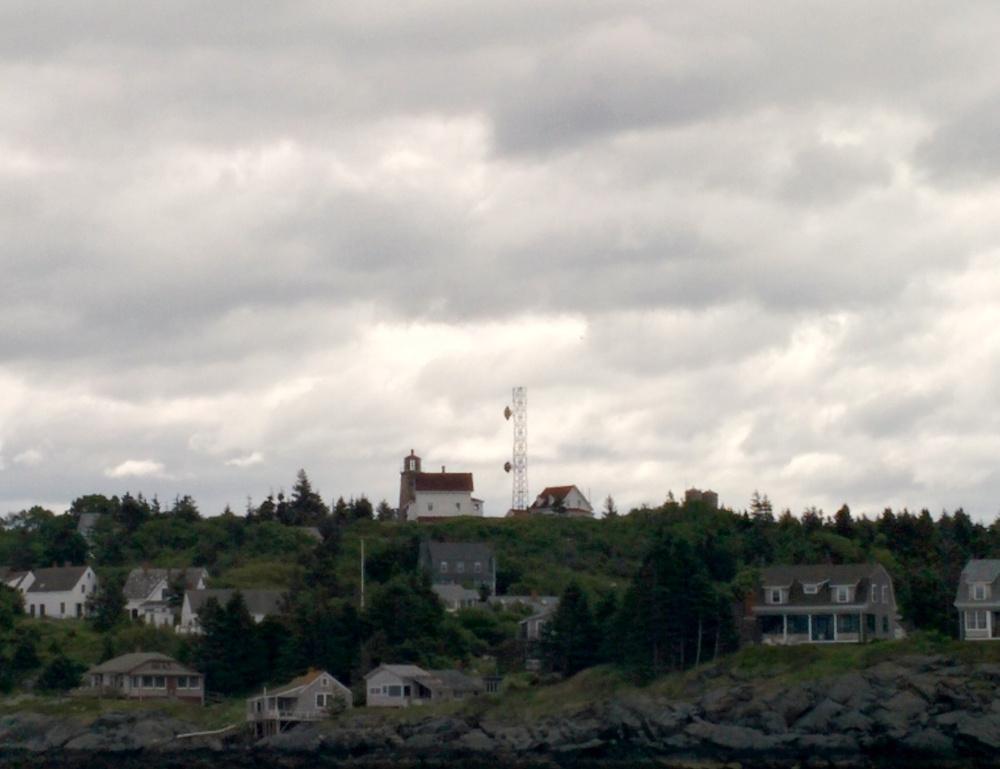Sustainability in Practice: Preventive Conservation at the Monhegan Historical and Cultural Museum
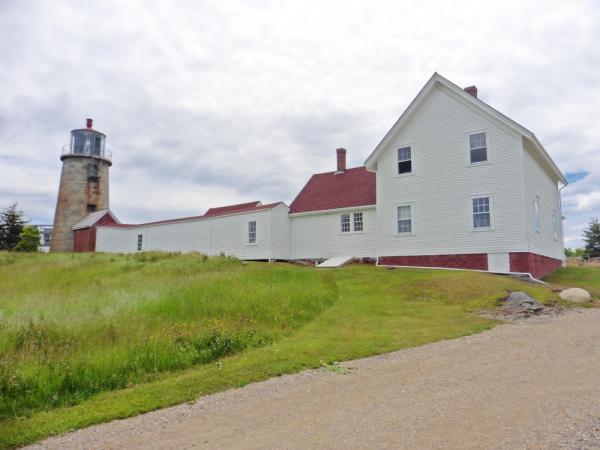
The main buildings of the Monhegan Museum and Light House, viewed from the walking trail that leads up from the island’s main dock.
Image by Adriana Cutler

The main buildings of the Monhegan Museum and Light House, viewed from the walking trail that leads up from the island’s main dock.
Image by Adriana Cutler
For the past seven years, NEH’s Division of Preservation and Access has sought to promote and support the future wave of projects in the field of preventive conservation through its Sustaining Cultural Heritage Collections grant program (updated guidelines now available!). Sustainability is not just a buzzword, but represents an important new approach to preserving our cultural heritage while also caring for the environment. Luckily, many cultural institutions are finding that what is in the best interest of their collections is also good for the environment. By focusing on passive measures that make less use of electrical power, libraries and museums can effectively manage the environment of their storage and exhibition areas while reducing overall energy costs.
Nowhere is this more important than on Monhegan Island, a small outpost about 12 miles off the coast of Maine, where electricity, produced via a diesel generator, costs 500% more than on the mainland. Besides high energy bills, the Monhegan Historical and Cultural Museum that calls the Island home must also contend with an environment that can be unforgiving, including harshly cold winters, variations in humidity levels, and high winds. While this particular confluence of high energy costs and extreme weather may be particular to Monhegan, many small to midsized cultural institutions across the country face similar energy and environmental challenges and could benefit from the kind of risk assessment and innovative site-specific projects supported through Sustaining Cultural Heritage Collections.
Monhegan Island began as a fishing outpost, first for Native Americans and later for European settlers, including those that helped supply food to Plymouth Colony in 1620. Fishing and lobstering continue to be prominent on the island today, sustaining a small population of year-round residents who mainly travel by boat and foot. The Island has also become well known as a destination for artists. Since the late 1850s artists from other parts of the Northeast have made their way to Monhegan to set up residency during the summer months, attracted to the Island’s wild and rocky landscapes and sense of solitude. Painters who have spent time at Monhegan’s summer artist colony include George Bellows, Edward Hopper, Rockwell Kent, Lynne Drexler, Andrew Wyeth, and Isabel Branson Cartwright, just to name a few.
The Monhegan Historical and Cultural Museum uses its collections of historical artifacts and paintings to tell the stories of both the year-round and seasonal residents of the island and in particular its history of fishing and artistic production. The museum (mainly housed in a historic lighthouse and assistant keepers home) is open during the summer months; it contains paintings by renowned artists, including those listed above, depicting the island alongside objects related to daily life and work on Monhegan, as well as special exhibits of artists in the museum’s newer building. The collection also includes items related to work on the Island such as ice harvesting tools, fishing gear, and lobster trap buoys unique to each fisherman.
Due to the historic nature of the buildings that house the exhibitions, the majority of the museum’s collections are kept in two storage buildings during the off season. During this yearly transition, museum staff must pay attention to issues such as high winds, as there is no way to protect larger paintings from the elements. The main storage vault was built in 1998, and the second vault is a converted garage made to resemble an ice house. While both have HVAC units to help deal with temperature and humidity fluctuations, the main exhibit spaces to do not have these mechanical systems. Because of the high cost of energy, the museum decided to explore passive measures and use local materials to help improve the preservation environment and mitigate moisture.
The museum was awarded both planning and implementation grants through Sustaining Cultural Heritage Collections. In 2013, the planning project involved a collaborative effort by museum staff and outside consultants to study the environmental issues that the collections faced in both the storage and exhibition environments, as well as to test passive solutions to address moisture problems. Based on their findings, an implementation project (currently in progress) followed. The museum decided to implement a combination of passive measures, such as sealing building envelopes, installing insulation and refurbishing windows, and is using landscaping methods to divert water from the buildings. The project also involves mechanical upgrades such as LED lighting and HVAC equipment. The latter will take advantage of the opportunity to recover heat from micro turbines being installed at the Monhegan Plantation Power District, located next to the museum and lighthouse. The effect of these improvements will be to reduce the museum’s dependence on electricity and propane.
Through interdisciplinary planning and risk assessments focused on the specific needs of the collections in their particular environment, the Monhegan Historical and Cultural Museum has found ways to be sustainable in every sense of the word. To learn more about the museum, its collections, and its off-season program, please visit monheganmuseum.org. To read more about Monhegan’s NEH-funded projects, click here.
